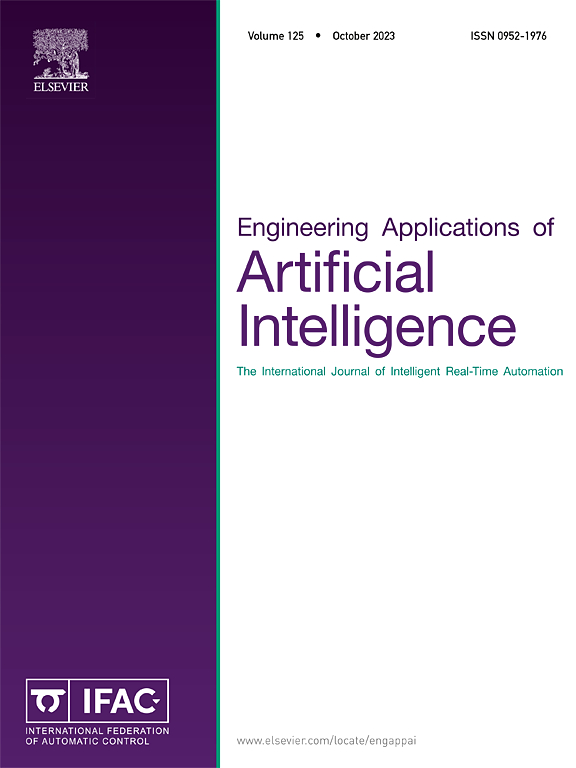Bending analysis of cantilever microbeams with three porosity distributions using physics-informed neural network and modified couple stress theory
IF 8
2区 计算机科学
Q1 AUTOMATION & CONTROL SYSTEMS
Engineering Applications of Artificial Intelligence
Pub Date : 2025-07-02
DOI:10.1016/j.engappai.2025.111589
引用次数: 0
Abstract
This study explores the use of a Physics-Informed Neural Network (PINN) framework to investigate the bending behavior of a cantilever microbeam made of porous material. PINN is a powerful approach that combines machine learning with physics principles to address the challenges of limited training data and enforce domain knowledge into the learning process, making them effective surrogate solvers for Partial Differential Equations (PDEs). In this work, a cantilever microbeam subjected to a uniformly distributed transverse load is examined, considering three different pore distributions including homogeneous, symmetric, and non-symmetric. The bending analysis incorporates the size effect by integrating the modified couple stress theory with the Euler-Bernoulli beam theory. First, the bending equation based on the modified couple stress theory is extended to include porous material properties. The governing equation is then solved using the Laplace transform. The PINN model is trained to approximate the solution by minimizing a loss function that accounts for residual errors at collocation points, as well as initial and boundary conditions. To enhance computational efficiency, the optimal hyperparameters of the PINN model are determined using a combination of Taguchi design of experiments and the Grey Relational Method. Taguchi-Grey approach effectively captures the trade-off between these objectives by normalizing and aggregating them into a single value to reflect the overall performance. The results are validated against analytical solutions based on Laplace transform, and the influence of key parameters such as microbeam length, length scale parameter, and porosity is systematically investigated.
基于物理信息神经网络和修正耦合应力理论的三种孔隙率分布悬臂微梁弯曲分析
本研究探索了使用物理信息神经网络(PINN)框架来研究由多孔材料制成的悬臂微梁的弯曲行为。PINN是一种强大的方法,它将机器学习与物理原理相结合,以解决有限训练数据的挑战,并将领域知识强化到学习过程中,使它们成为偏微分方程(PDEs)的有效代理求解器。在这项工作中,考虑到三种不同的孔隙分布,包括均匀、对称和非对称,悬臂微梁受到均匀分布的横向载荷进行了研究。将修正的耦合应力理论与欧拉-伯努利梁理论相结合,将尺寸效应纳入弯曲分析。首先,将基于修正耦合应力理论的弯曲方程扩展为包含多孔材料特性的弯曲方程。然后用拉普拉斯变换求解控制方程。通过最小化损失函数,训练PINN模型来近似解,损失函数考虑了搭配点的残差,以及初始和边界条件。为了提高计算效率,采用田口实验设计和灰色关联方法相结合的方法确定了PINN模型的最优超参数。Taguchi-Grey方法通过将这些目标规范化并聚合成一个值来反映整体性能,从而有效地捕获了这些目标之间的权衡。利用基于拉普拉斯变换的解析解对结果进行了验证,并系统研究了微梁长度、长度尺度参数、孔隙度等关键参数对结果的影响。
本文章由计算机程序翻译,如有差异,请以英文原文为准。
求助全文
约1分钟内获得全文
求助全文
来源期刊

Engineering Applications of Artificial Intelligence
工程技术-工程:电子与电气
CiteScore
9.60
自引率
10.00%
发文量
505
审稿时长
68 days
期刊介绍:
Artificial Intelligence (AI) is pivotal in driving the fourth industrial revolution, witnessing remarkable advancements across various machine learning methodologies. AI techniques have become indispensable tools for practicing engineers, enabling them to tackle previously insurmountable challenges. Engineering Applications of Artificial Intelligence serves as a global platform for the swift dissemination of research elucidating the practical application of AI methods across all engineering disciplines. Submitted papers are expected to present novel aspects of AI utilized in real-world engineering applications, validated using publicly available datasets to ensure the replicability of research outcomes. Join us in exploring the transformative potential of AI in engineering.
 求助内容:
求助内容: 应助结果提醒方式:
应助结果提醒方式:


